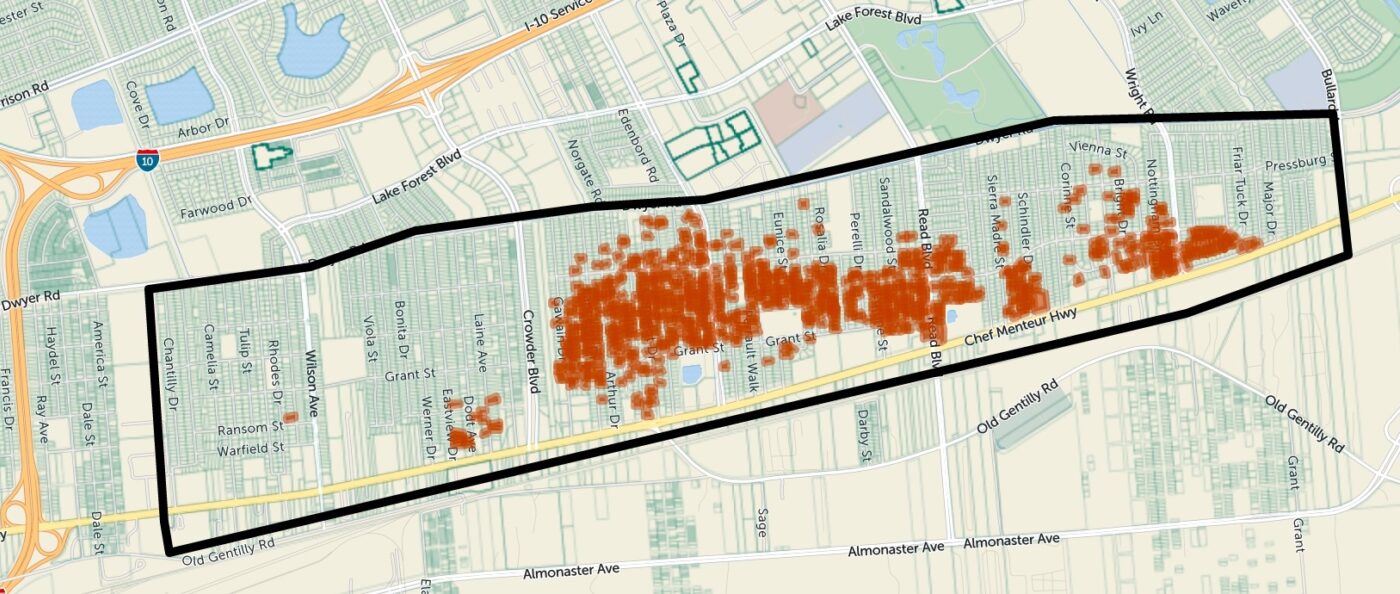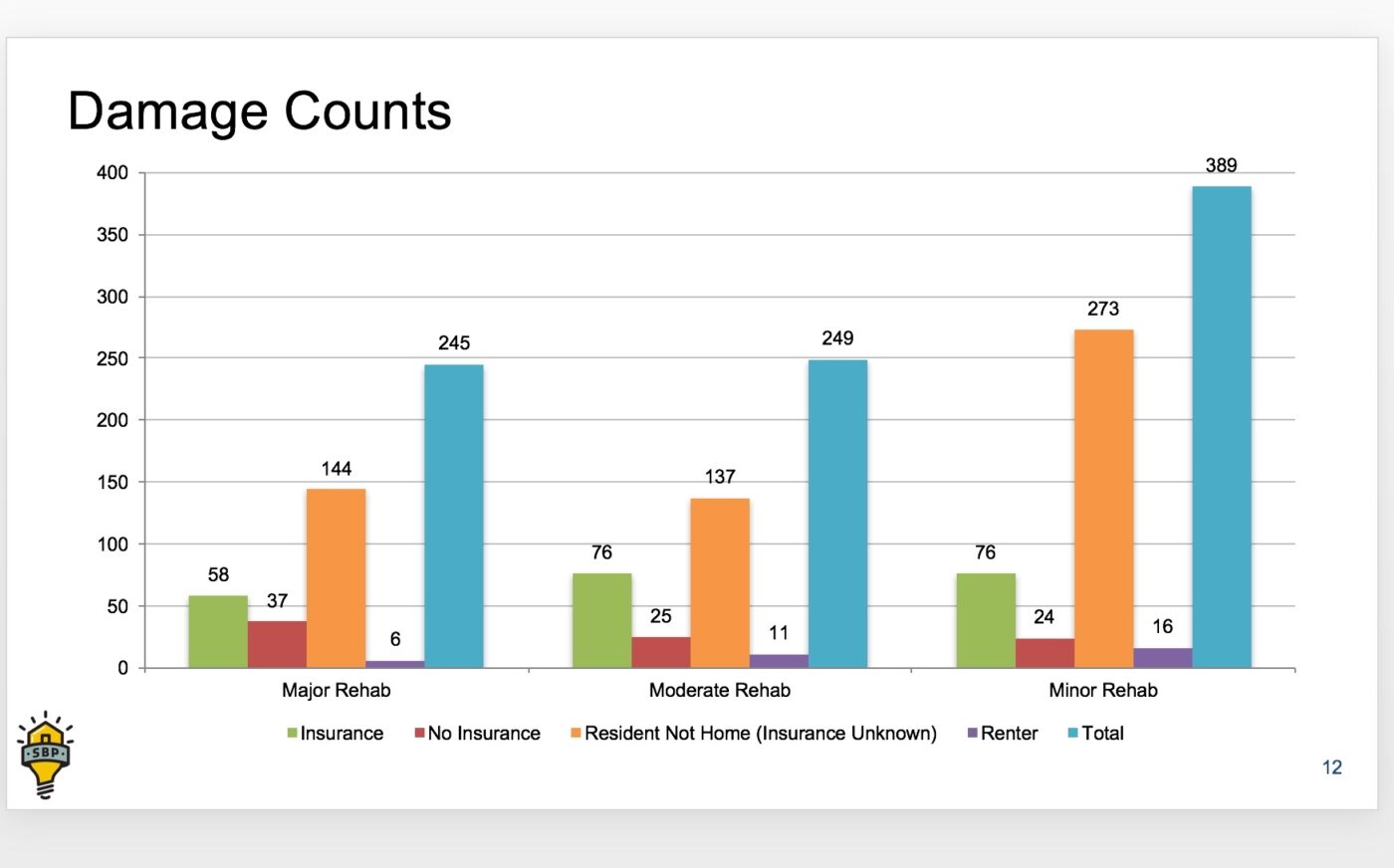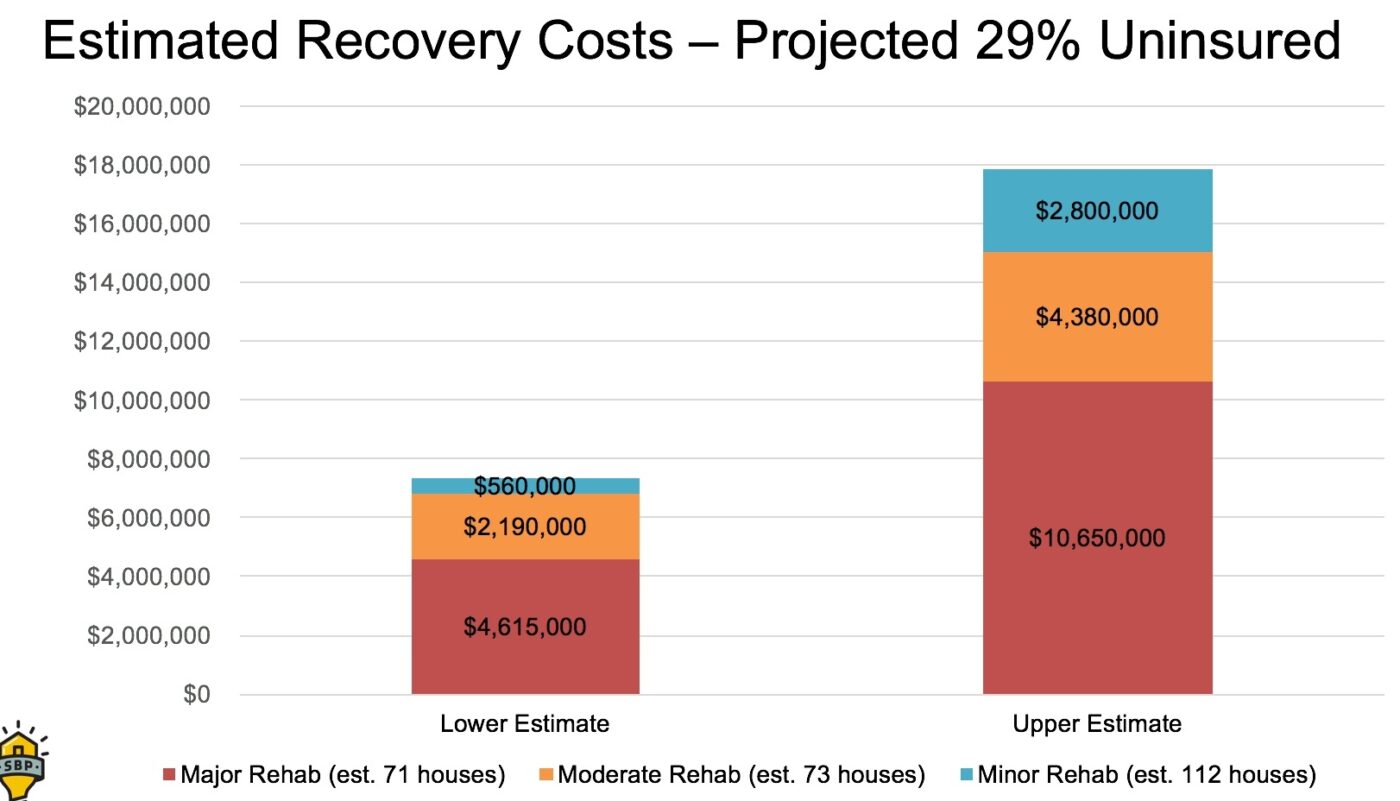On February 7th, a series of tornadoes touched down across Louisiana. One of those was an EF3 which tore through New Orleans East, a neighborhood that had only recently recovered from Hurricane Katrina.
When the tornado struck and we realized the extent of damage, we knew we would be involved in the long-term recovery and that many of the impacted citizens would be uninsured homeowners. Residents in the area are hardworking people who often face a tough financial choice when choosing insurance coverages. Many mitigated their greatest risk - flooding - by carrying flood insurance, but did not or could not purchase homeowners insurance - which covers wind events like tornadoes. We just did not know how many households would need help rebuilding.
In a matter of minutes, hundreds of homes had been destroyed or heavily damaged, and residents’ lives were once again upended. Just a fifteen minute drive from the disaster area, SBP was well positioned to respond. Knowing the necessity of a prompt and predictable recovery, SBP team members were able to distribute valuable, free resources such as contractor fraud checklists and FEMA assistance guides to help impacted residents make smart decisions in a stressful time. These resources were intended to help ensure three of SBP’s goals for this particular recovery:
To have zero cases of contractor fraud;
All insurance and FEMA claims to be paid out within six months;
Return all impacted residents home within two years.
Simultaneously, volunteers led by SBP’s AmeriCorps members provided debris removal across the East, helping more than 200 homeowners prepare their homes for rehabilitation or demolition.
During this critical period, for the first time, SBP conducted a real-time Geographic Information System (GIS) survey of the entire impacted region, to quickly and accurately determine the severity of the damage, insurance coverage and cost to rebuild, so that SBP could provide the city - and in turn the Federal Government - a clear assessment of the cost to rebuild for those under or uninsured.
Over three and a half weeks, SBP AmeriCorps members and an army of volunteers fanned out across New Orleans East to canvass the neighborhood house by house, taking pictures of each property and speaking with homeowners - if they were on site - to learn more about their needs, the damage to their homes and the resources they had on hand - or lacked - to rebuild. These data points were entered into a phone based app called Loveland, which produced quick and accurate data that SBP and the City of New Orleans are now using to plan the rebuilding for those under and uninsured.
Taken as a whole, the rapid dissemination of useful information to the public, and the accurate gathering of on-the-ground data helps impacted homeowners take appropriate and timely action, and enables policy makers, government officials, and NGOs to make informed decisions quickly, which in turn will lead to a prompt and efficient recovery. We see this as a new model for small-scale disaster recovery - it’s a model which could save homeowners untold heartache and taxpayers millions of dollars.
February’s tornado was just one of many small-scale disasters which occur across the country every year. The learnings and takeaways from this disaster will help speed recoveries in communities across the country. Here is what SBP found, particularly as it relates to the organization’s GIS survey project.
To conduct the survey, the SBP team worked with Loveland Technologies who has developed a GIS enabled app which enabled those conducting the survey to take pictures of each property visited and go through a custom questionnaire with homeowners among other things asked if they had insurance or not. At the end of each day, the data from each home visited was plotted on a map of the area, enabling SBP team members to assess in near real-time the status of each property and the damage across the region.
The GIS canvassing effort, led by Meredith Beers from SBP’s Disaster Resilience and Recovery Lab (DRRL), and conducted by AmeriCorps members and volunteers, was able in a matter of days, to provide actionable data used to inform SBP’s rebuilding efforts and determine an accurate estimated cost for recovery efforts. Beers noted an added benefit of door-to-door canvassing, saying, “As we canvassed, we were able to provide SBP’s homeowner resources as well as rebuilding intake information to those clients who were un or underinsured. This allowed us to start the intake process about two weeks earlier than in previous disasters.”
The level of detail, speed and accuracy that GIS brings to post disaster assessment represents an exciting opportunity for a range of organizations from NGO’s to government agencies. By quickly and accurately mapping a disaster area, not just photographically, but overlayed with input like insurance coverage directly from area residents, those organizations can begin rebuilding sooner, and more efficiently thereby shrinking the time between disaster and recovery.

By the Numbers:
3 ½ Weeks - to canvass the impacted area house by house, assess damage and draw statistical conclusions such as insurance coverage rates.
Volunteers/Canvassers involved - 90
Homes Canvassed - 3,984
Homes with some form of damage: 882
Homes with “Major” (50%+) damage: 245
Homes with “Moderate” (50% damaged roof or exterior wall damage): 249
Homes City of New Orleans originally estimated had suffered “Major” Damage: 300
Impacted Homeowners Insured vs. Uninsured: 71% insured, 29% uninsured
Estimated cost to rebuild: $7 million (low end estimate) - $18 million (high end estimate)

Results:
Of the 329 residents who were home when we conducted the survey, 300 own their homes, and 71% of these individuals had homeowners insurance. Twenty-nine percent of the homeowners we talked to were uninsured. We then assumed that this proportion was representative of the area, and calculated that of the 245 homes that had major damage, 71 of those homeowners likely did not have insurance. We performed the same calculation for moderate damage and minor damage. Next we created an estimate for how much repairs would likely cost in each category (major damage = >$65,000; moderate damage = $30,000 - $60,000; minor damage = <$25,000.) When these dollar amounts were multiplied by the estimated number of uninsured homes in each category, we arrived at our cost to rebuild estimate.
As we continue to get information about homes, insurance, and damage, we update our survey, but as of today we estimate we will need to raise about $10,000,000 to help repair and rebuild the homes of the uninsured - of which we estimate to be 256 homes.

Leveraging the Data:
Through our sharing of data with the City of New Orleans, we have identified recovery funding gaps or unmet needs where they exist and determined an estimated cost to rebuild with lower and upper bounds. We were also able to cross reference our data with a preliminary damage assessment the city conducted in the days after the tornado, and found that some homes included in the City’s assessment have been abandoned since Katrina. Through a more accurate understanding of the scope of damage, and number of families without insurance, the city is working to provide the appropriate amount of temporary shelter for families and SBP along with our partners in the city government and other local NGO’s now have a plan to raise the funds necessary to rebuild.
In estimating the cost to repair the homes of the uninsured we began working with other local for-profit and not-for-partner partners on how we would raise those funds. We will each leverage the connections we have locally and nationally to create a Tornado Relief Fund, which can be used to assist homeowners who have gap funding needs that are unmet through other funding streams.
The photos taken of each home via the GIS survey allow SBP to show city managers and funders actual damage to each property. This has enabled a comprehensive understanding of funds needed for long-term recovery and funding gaps, making possible the structuring of an effective rebuilding program alongside the city and with other local partners like GNOF, United Way, and Entergy.
Our data enables the City Government to:
Reach out to homeowners with damage who have not filed for FEMA or who were under-compensated;
Request appropriate funding from the state to rebuild houses that are substantially damaged (>50%);
Identify where unmet needs exist and ensure that those gaps are filled;
Identify or create affordable, sustainable temporary housing for survivors; and
Determine which houses may be abandoned.
Unfortunately, New Orleans is no stranger to disaster. For those impacted by February’s tornado and who had only recently recovered from Katrina’s flooding, this was a cruel setback. But I am confident that the work done by the SBP team will provide a prompt, efficient and predictable recovery to residents of New Orleans East. I am also excited at the prospect of developing this model further, in coordination with the City of New Orleans and our partners, to bring this type of efficiency and accuracy to every disaster across the country - no matter the scale.
To donate to SBP's Tornado recovery fund, click the button below.

